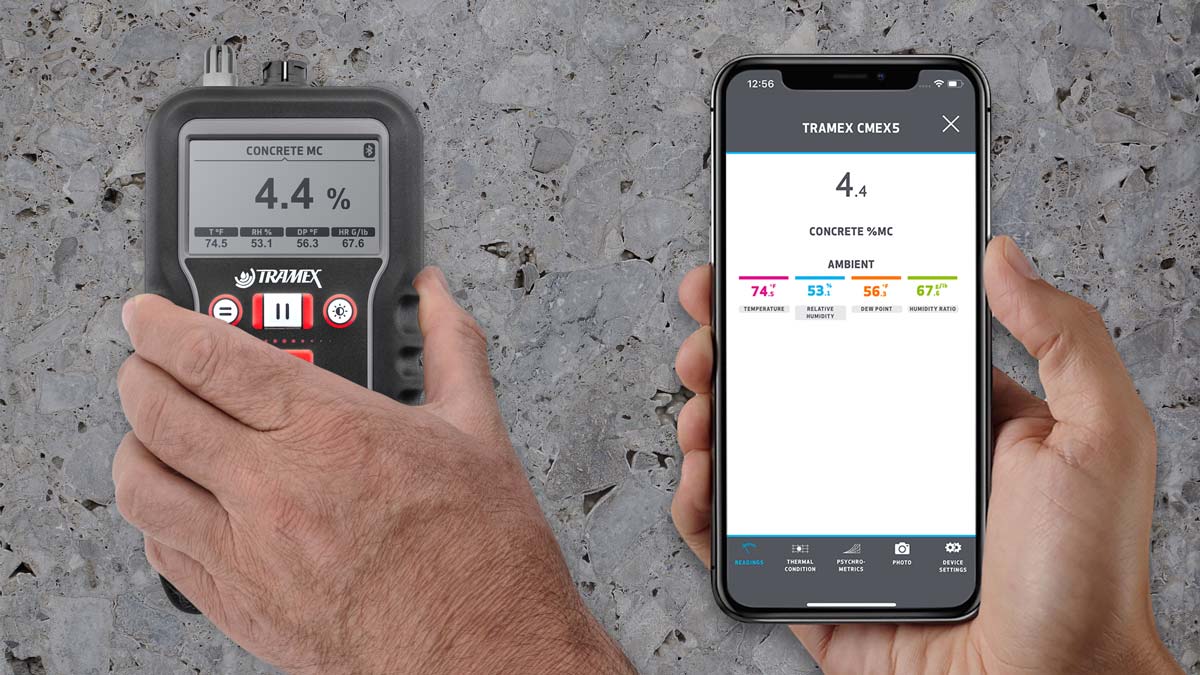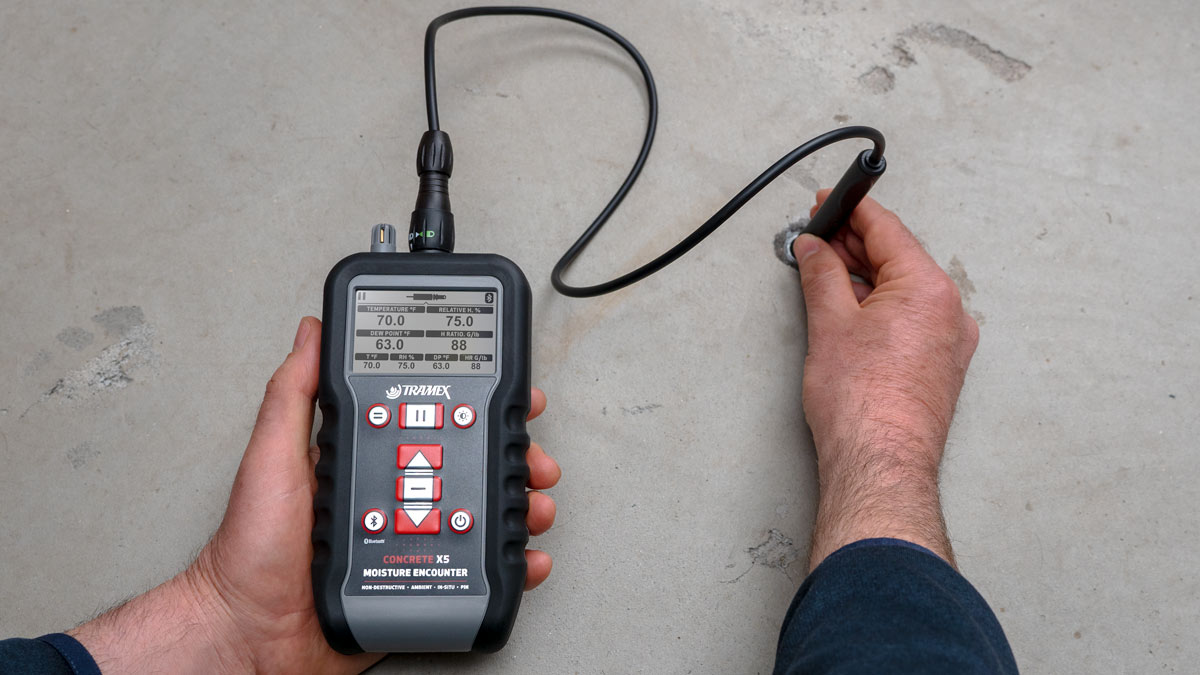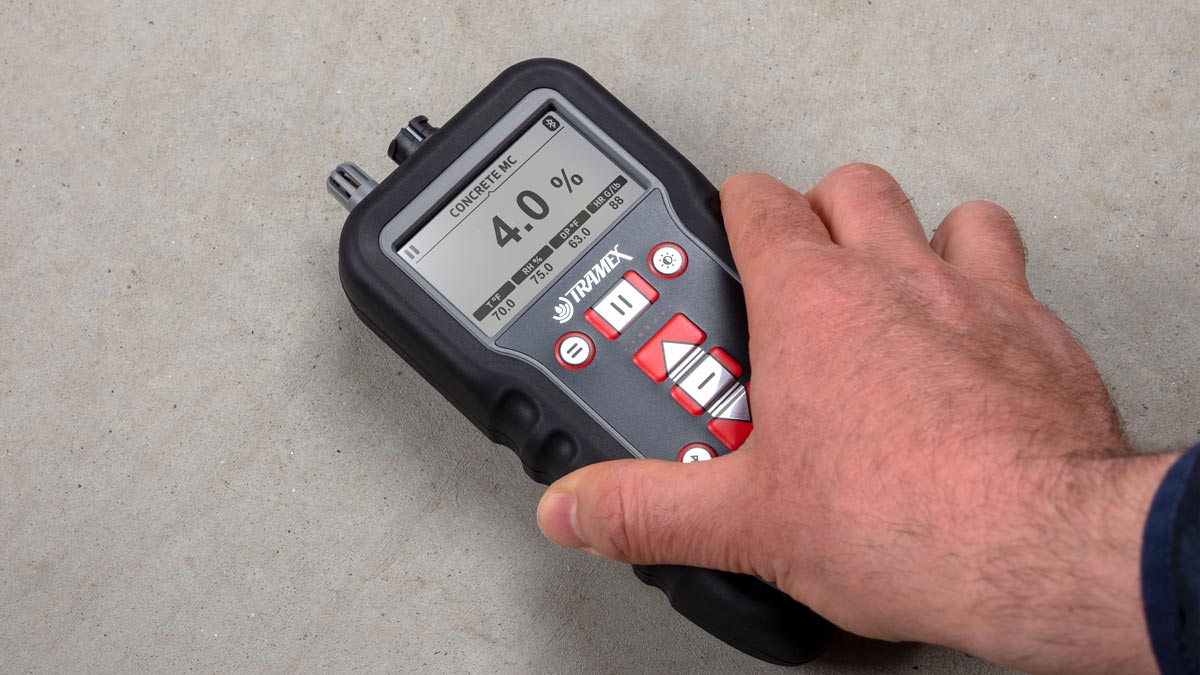
A concrete moisture test at the time of floor installation involves taking %MC readings and checking surface temperature & Ambient Conditions, as described in the Tramex Installation Quick Check Test, and will reduce moisture-related floor failures.
It is commonly recommended that the ambient temperature should be at least 10ºF/ 5ºC above the surface temperature of the slab when applying an adhesive or coating. If the surface temperature is within 10ºF above the ambient dew point, the concrete pores of the slab could fill with enough liquid moisture to prevent the absorption of the adhesive or coating that is needed to create a bond with the concrete.
Ambient Conditions are important and often overlooked when measuring the moisture conditions of a concrete slab to check if it is dry enough to accept a floor covering or coating. It is important to remember that moisture moves from Hot to Cold and that Concrete is generally 1-2 degrees cooler than the ambient temperature. If the temperature of the slab is too close to Dew Point, the upper portion of the concrete can become saturated with the moisture that moves from the warmer air to the cooler concrete slab.
Concrete Moisture Meters
Tramex Concrete Moisture Encounter Meters, the Concrete Moisture Encounter 5 and the Concrete Moisture Encounter X5, will detect liquid moisture in the top 3/4" of the slab giving an instant and quantitative moisture content measurement. This is critical information to form an educated decision as to the concrete slab’s ability to accept a floor covering or coating. It is also critical that this is done at the time of installation.
Testing RH and moisture in concrete
ASTM F2170 or ASTM F1869 tests may well have been carried out during the drying process, prior to installation, and may well have indicated that the slab was dry enough, but keep in mind that both of these ASTM guides indicate that the test results are only indicative of the conditions they are testing at the time the tests were performed. In addition, both of these tests are vapor moisture tests, not Liquid moisture tests. They are carried out during the drying process, maybe days or weeks prior to installation.
RH concrete tests (Vapor Moisture) are valid and important tests, but they do not give the critical information regarding the moisture conditions on the day of the installation itself. Without testing at the time of installation, we do not have the complete picture.
Excluding the Moisture Content (with a concrete moisture meter giving %MC readings) and Ambient conditions at the time of installation amounts to taking a risk on whether or not condensation has occurred between the time of carrying out F2170 or F1869 and the actual day of installation.
The complete concrete moisture testing picture is achieved by adding %MC readings to your RH% readings. Knowing your Ambient Conditions and %MC at time of install will reduce moisture related failures dramatically.

Performing ASTM F2170 With CMEX5 and Hygro-i2 probe

Non-destructive, quantitative reading of moisture content in concrete with Tramex CMEX5
Concrete Slab Moisture Problems
Moisture can cause similar issues whether it comes from the slab, beneath the slab or from the air above the slab, and although the issues can be similar, the mitigation is not. Therefore identifying the source of the moisture is a key part of testing. Moisture from the air is of particular concern at the time of installation and therefore, a quick check at install with an Installation Quick Check Kit can solve a lot of problems.
Why Risk it? Test with Tramex!